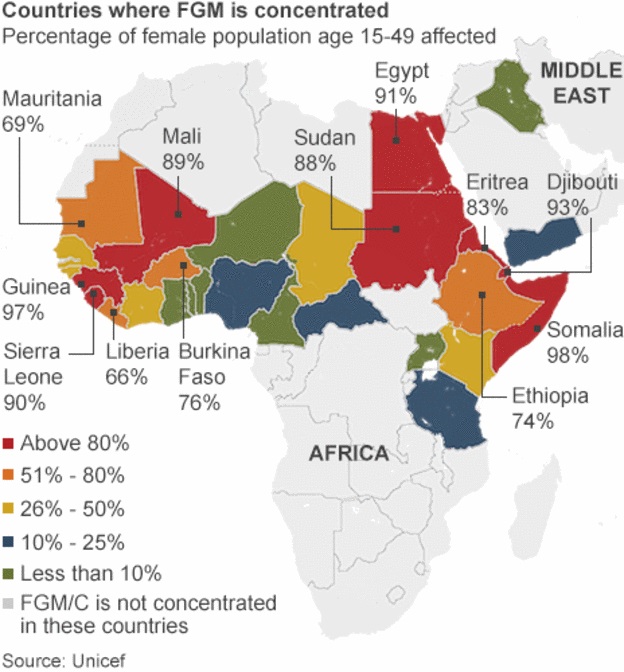Female Genital Mutilation (FGM) is illegal in many countries around the world but millions of girls still remain at risk of undergoing the process, which involves the cutting of the clitoris. In extreme cases, it involves the scraping away of the labia minora. There are three different types of FGM, which include clitoridectomy, excision and infibulation.
According to a 2013 UNICEF report, FGM is practised in about 30 countries in the world including nations in Africa, Middle East, Asia and within some immigrant communities in Europe, North America and Australia.
The practice is particularly high in Africa with Somalia accounting for the highest rate of FGM at 98 percent. Non-Governmental Organizations (NGOs) and social activists have been working tirelessly to put an end to this practice, which endangers the lives of millions of African girls. Some countries have successfully placed a ban on this practice. For example, last month, the president of Gambia banned the process saying that it was not required in Islam. FGM, also known as female circumcision, can also lead to tetanus, gangrene, HIV, hepatitis B and hepatitis C and effective sterilisation.
Below is an infographic that shows countries where FGM is highly concentrated.
For more insight, click to listen to the podcast below









